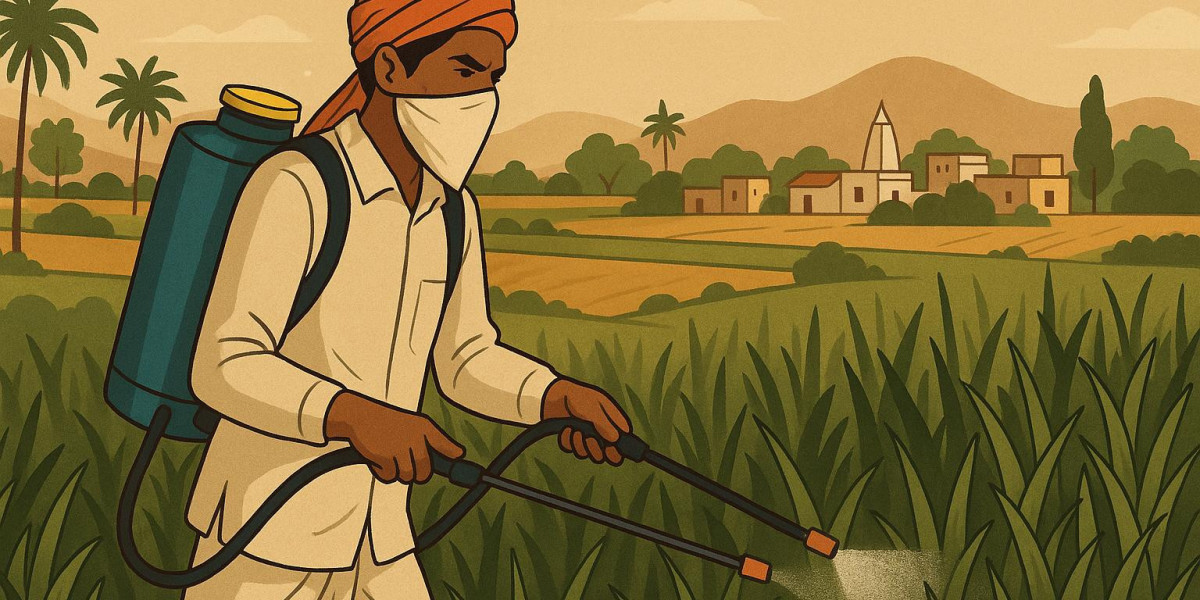In Indian agriculture, policy discussions often center around fertilizers, irrigation, or MSP (Minimum Support Price). Yet, one silent disruptor continues to inflict massive seasonal damage with little national spotlight—beetles. From bruchids in pulses to red pumpkin beetles in cucurbits and leaf borers in cotton, beetles cost Indian farmers thousands of crores in losses annually. Despite this, national policy frameworks rarely treat them with the urgency given to locusts, nematodes, or fungal diseases.
As beetle populations grow more resilient and unpredictable due to changing climate patterns, it's time for India’s agri policy to rethink how it tackles these pests—beyond advisory leaflets and reactive pesticide drives.
What Makes Beetles a Distinct Threat?
Unlike many pests, beetles don’t follow a single behavior pattern. Some feed externally, others burrow into pods or fruits. Their damage is subtle at first—leaf notching, tiny bore holes—but by the time symptoms become visible, irreversible crop loss is already underway.
Key issues include:
High adaptability across zones and seasons
Resistance to conventional insecticides due to overexposure
Infestation in both the field and storage phases
Cross-border movement through seed material and untreated harvests
In crops like pigeon pea, lentil, brinjal, okra, and cucurbits, beetles are not just occasional threats—they’re routine, yield-impacting hazards that lack a dedicated national mitigation framework.
Where Current Policy Gaps Lie
Most pest control policies under ICAR, the Ministry of Agriculture, or State Agri Departments focus on high-visibility outbreaks, like desert locusts or armyworms. For beetles:
Pest-specific action plans are rare
No structured monitoring or early warning systems exist
Subsidized chemical interventions don’t prioritize beetle-targeted formulations
Extension services often overlook post-harvest beetle threats
Farmers rely heavily on general-purpose insecticides or outdated combinations, which contribute to the build-up of resistance and poor field control. Without focused policy and funding support, local-level action remains fragmented and under-equipped.
Which Crops Are Most Affected and Underreported?
According to a survey by the Indian Agricultural Research Institute (IARI), beetles reduced the average production of vegetables, lentils, and cotton by 18 to 45% in untreated plots. However, this harm is usually mistakenly ascribed to illness or environmental stress.
Top affected crops include:
Brinjal: Shoot and fruit borers, leaf-eating beetles
Pulses (gram, lentil, pigeon pea): Bruchids and pod borers
Cucurbits: Red pumpkin beetles, leaf beetle species
Stored pulses and oilseeds: Callosobruchus spp. during storage
These pests not only damage yield but also reduce seed viability, market value, and export potential.
The Role of Targeted Insecticides and Better Awareness
One of the strongest field-level solutions lies in using pest-specific, dual-mode insecticides that act on both larvae and adults, before they burrow into protected zones of the plant. A well-aligned example is Fenos Quick Flubendiamide 90 + Deltamethrin 60 SC Insecticides.
Flubendiamide disrupts larval feeding by targeting muscle regulation, resulting in rapid paralysis
Deltamethrin delivers contact action on exposed beetle adults with excellent leaf surface coverage
Suitable for crops like okra, brinjal, cotton, and cucurbits
Reduces repetitive spraying cycles by combining ingestion and contact action
Using this kind of formulation helps delay resistance and ensures both visible and hidden pests are controlled early. However, such products are underutilized in subsidy schemes or agri extension demonstrations.
Why Beetle-Specific Data Collection Needs a Policy Push
There can be no diagnosis without data. Pest heat maps for beetle infestations across agricultural zones or districts are not available in India. Beetle movement and lifecycle triggers are not covered by remote sensing or satellite-based pest predictions, which are already used for locusts and aphid vectors.
A national beetle monitoring framework should include:
Pest-specific traps deployed through KVKs and farmer collectives
Crowdsourced reporting platforms via farmer mobile apps
Seasonal risk maps shared via Agri SMS alerts or state portals
District-wise pest economic thresholds made available in local languages
Models like those used in CABI’s Plantwise program show how structured pest intelligence can help farmers act early and accurately.
“You cannot control what you don’t track. Invisible pests become invincible threats.” — Entomologist’s field note
Building Beetle-Resilient Farm Practices Beyond Sprays
An agri policy shift must go beyond chemicals. Crop planning and field practices should also align with beetle suppression goals.
Seed certification reforms: Ensure storage pest management protocols for seed distribution agencies
Intercropping advisories: Promote trap crops like mustard in brinjal or sunflower in pulses
Post-harvest training: Storage hygiene, fumigation, and inert dusting to prevent bruchid infestations
Community-based light trap distribution: Encourage night beetle control via low-cost solar traps
Smallholder farmers would use these strategies more frequently if certification programmes, demonstration plots, and input subsidies supported them.
Addressing the Economic Undervaluation of Beetle Losses
Seldom is beetle damage computed in MSP compensation applications or loss evaluations. In contrast to droughts or hailstorms, insect damage necessitates visual evidence and crop stage-specific examination, which is frequently challenging for beetle infestations.
This policy blind spot leads to:
Under-reporting of damage
Exclusion from pest compensation programs
Low prioritization in agri budget planning
Including beetle damage data in e-NAM, FPO procurement records, or insurance claim audits would help quantify the true economic impact and justify targeted funding.
FAQs
Why aren’t beetles included in national pest alerts?
They cause gradual, cumulative damage and lack large-scale visibility like locusts, so often go unnoticed in alerts.Are all beetles harmful to crops?
No. Some like ladybird beetles are beneficial. Proper identification is essential before intervention.Can indigenous practices control beetle outbreaks?
In some cases, yes—like neem sprays or trap cropping. But they need support from modern tools during peak infestations.Is there a storage beetle policy in India?
Storage guidelines exist under PFA and FSSAI, but enforcement is weak at farm and mandal-level godowns.How often should beetle-specific insecticides be rotated?
Rotate every 15–21 days, using different IRAC groups to prevent resistance.
The Way Forward: Making Beetle Control Policy-Relevant
For Indian agri policy to be truly holistic, beetle management must gain the same importance as soil health, irrigation, or crop insurance. That includes:
Pest-specific chemical and biological advisory programs
Data-driven district-level intervention models
Financial support for trap-based and ecological control
Market incentives for pest-free produce (especially in export crops)
Observing the little things that have a huge impact is just as important to agricultural sustainability as major reforms. It would be like ignoring termites in a wooden house to ignore beetles because they aren't as noticeable as other pests.
Beetle control needs to become a strategic pillar of national agricultural planning rather than a footnote in pest management handbooks in order to guarantee food security and income protection for India's farmers.







